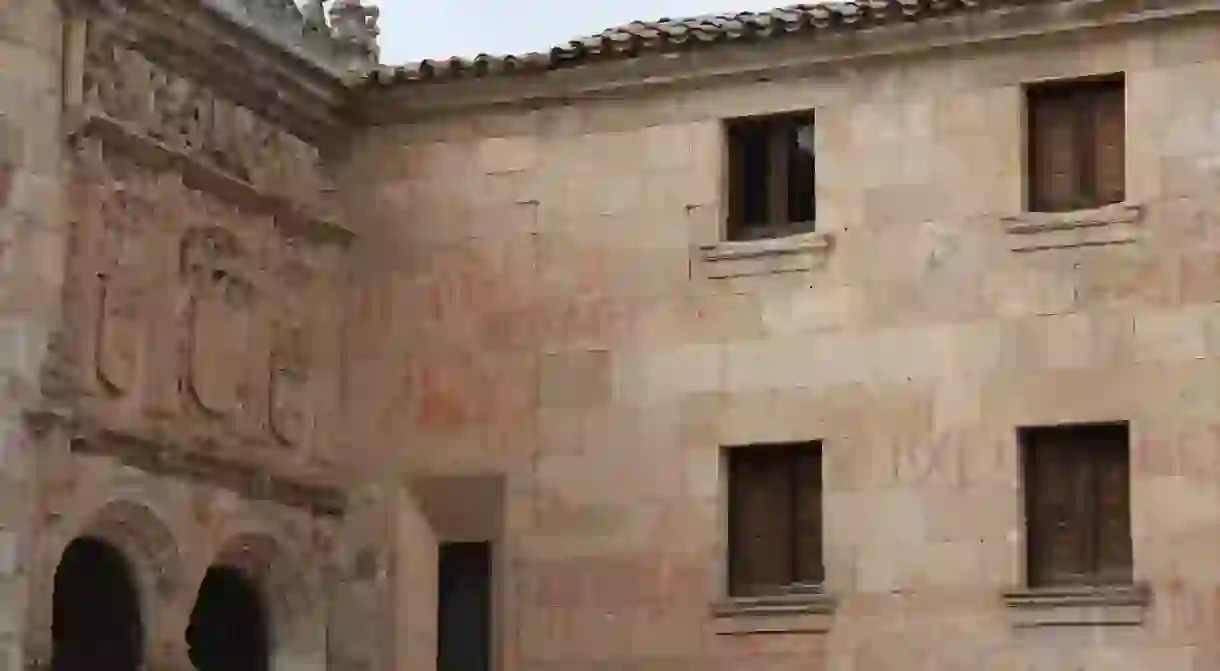A Guide to Frog-Spotting in Salamanca

Every visitor to Salamanca hears about the fabled frog, one of the most famous symbols of this beautiful Spanish city. But unlike Salamanca’s other, more obvious landmarks, this one is small and carefully hidden, and not all visitors manage to seek it out.
The legend goes like this: when students arrive for the very first time at the renowned University of Salamanca – the oldest in Spain and the third-oldest in the world – they’re greeted with a challenge: if they can spot the tiny frog carved into the intricate stone facade of the university’s main building, they’re sure to have great academic success and pass their exams without a problem. Sounds easy enough. But the trouble is, the carved stonework above the main entrance, La Puerta de Salamanca, is very intricate.

Created during the 16th century, this highly decorative stone entrance opens out onto a small plaza where you’ll usually find tourists and students gazing upwards, searching the exterior to find the little frog. Even if you’re not a student at the university, it’s still good fun to try to find the famous symbol. Some say it can take hours. If you would like a little bit of extra help with your search, read on to the end of the article, where we’ll give you a clue as to where to find it.
If you’re wondering what the frog symbolises, recent studies explain that the skull it’s sitting on is meant to represent Seville’s Prince Juan, who died as a teenager in 1497 before the facade was built. The frog represents Doctor Parra, the doctor who tried frantically to save the prince’s life. This explains the frog’s nickname of Parrita (‘little Parra’).
Salamanca is famously home to several similar curious stone carvings. To see more, walk across to the nearby New Cathedral, where you can find a gargoyle eating an ice cream, and an astronaut, carved onto its centuries-old facade.
Spoiler: Look out for a skull on the right-hand side of the facade; the frog is sitting on top.













